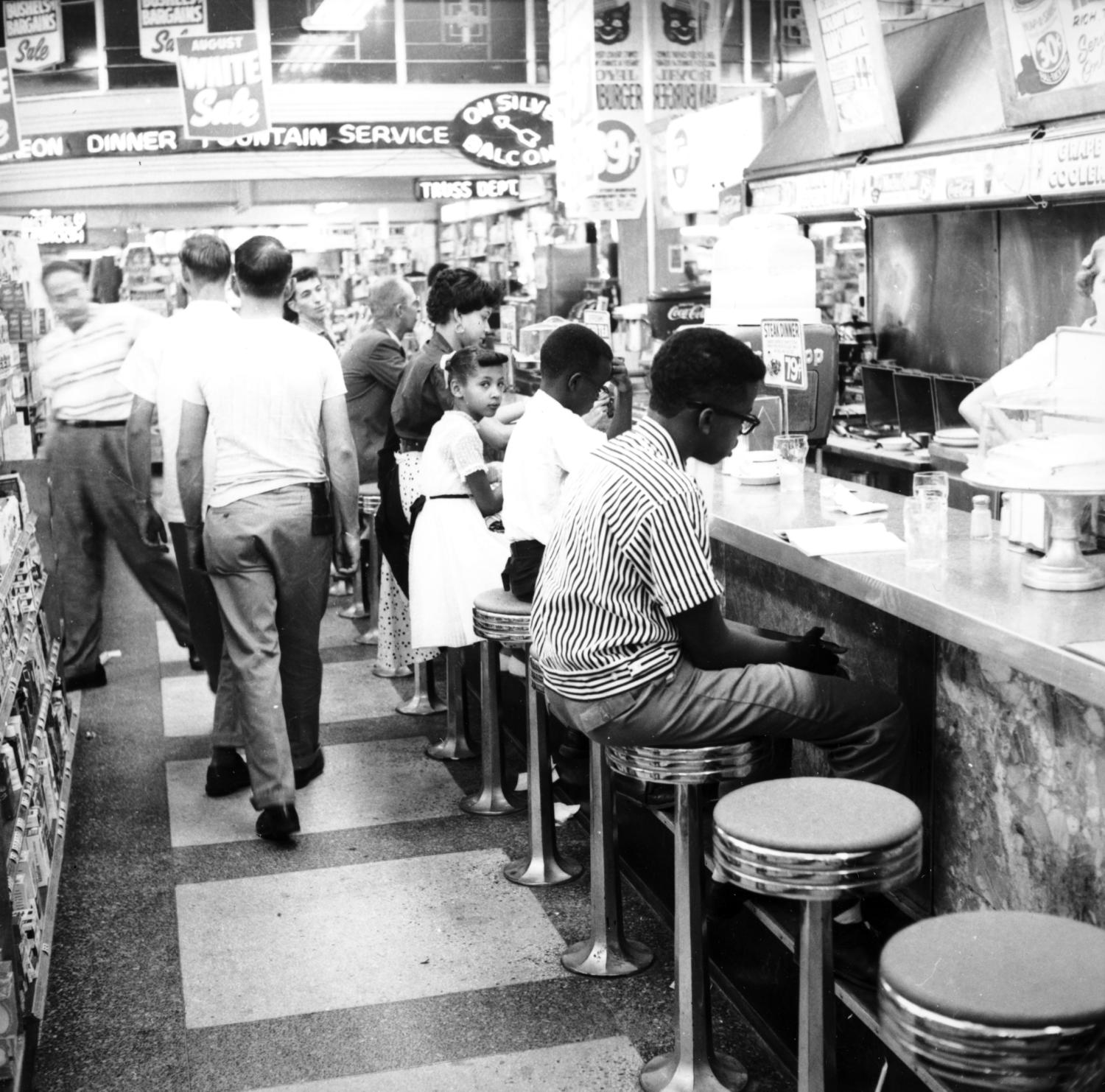The Katz Drug Store Sit-Ins occurred from August 19 to August 20, 1958, at the Katz Drug Store in Oklahoma City, Oklahoma. The leading cause of the sit-in was the racial segregation at the lunch counter, which was the official policy of the drug store at the time. The sit-ins were organized by schoolteacher and civil rights activist Clara Luper after her teenage daughter, Marilyn Luper, said, “Why didn’t I just go in and ask for a Coca-Cola and a hamburger?” prompting Luper to think about staging a sit-in to protest Katz’s racial policies.
Before the sit-ins occurred, Luper attempted to communicate with the Katz Drug Store owners by mail, but her letters were ignored. She then decided to act. Luper organized the sit-in with thirteen of her Black high school students including her children Marilyn Luper and Calvin Luper as well as Portwood Williams Jr, Richard Brown, Alma Faye Washington, Areda Tolliver Spinks, Elmer Edwards, Lynzetta Jones Carter, Gwendolyn Fuller Mukes, Lana Pogue, Betty Germany, Barbara Ann Posey Jones, and Donda West who would later be the mother of future Hip Hop superstar Kanye West.
On August 19, 1958, Luper and the students went to the Katz Drug Store, sat at the lunch counters, and ordered thirteen cokes. They were refused service, but they stayed at the lunch counter for hours while White segregationists attacked them by kicking, punching, spitting at them, and pouring things on them. They returned the next day and sat until one of the drugstore employees served them food. With his act, segregation ended at the Katz Drug Store restaurant that day. The sit-ins’ success can also be attributed to Bill Percer, a Lieutenant in the Oklahoma City Police Department at the time. Luper and Percer silently agreed that he and his men would not harm students if they remained non-violent during the demonstration.
The sit-in at Katz Drug Store would spark a series of sit-ins and other civil rights demonstrations throughout Oklahoma City Restaurants for the next six years until the 1964 Civil Rights Act was passed, which desegregated public accommodations across the United States. Actor Charlton Heston flew from Hollywood in May 1961 to participate in one of the demonstrations. Heston wore a sign that read “All men are created equal” as he marched with Luper and other local activists protesting the city’s segregated restaurants.
Clara Luper would become a significant leader in the fight to end racial segregation in Oklahoma by leading other civil rights campaigns around Oklahoma City, including gaining equal banking rights, employment opportunities, open housing, and voting rights. She would help contribute to the integration of restaurants, cafes, theaters, hotels, and churches across the city.
Do you find this information helpful? A small donation would help us keep this available to all. Forego a bottle of soda and donate its cost to us for the information you just learned, and feel good about helping to make it available to everyone.
BlackPast.org is a 501(c)(3) non-profit and our EIN is 26-1625373. Your donation is fully tax-deductible.
“Katz Drug Store Sit-In,” Oklahoma Historical Society, https://www.okhistory.org/crossroads/issue6/page.php?no=7; “Katz Drug Store Sit-In,” Clara Luper Legacy, https://www.claraluperlegacy.com/clara-s-story; “Katz Drug Store Sit-In,” The Oklahoman, https://www.oklahoman.com/story/business/2018/08/12/60-years-later-oklahomas-sit-in-movement-is-remembered/60508097007/.
Your support is crucial to our mission.
Donate today to help us advance Black history education and foster a more inclusive understanding of our shared cultural heritage.

